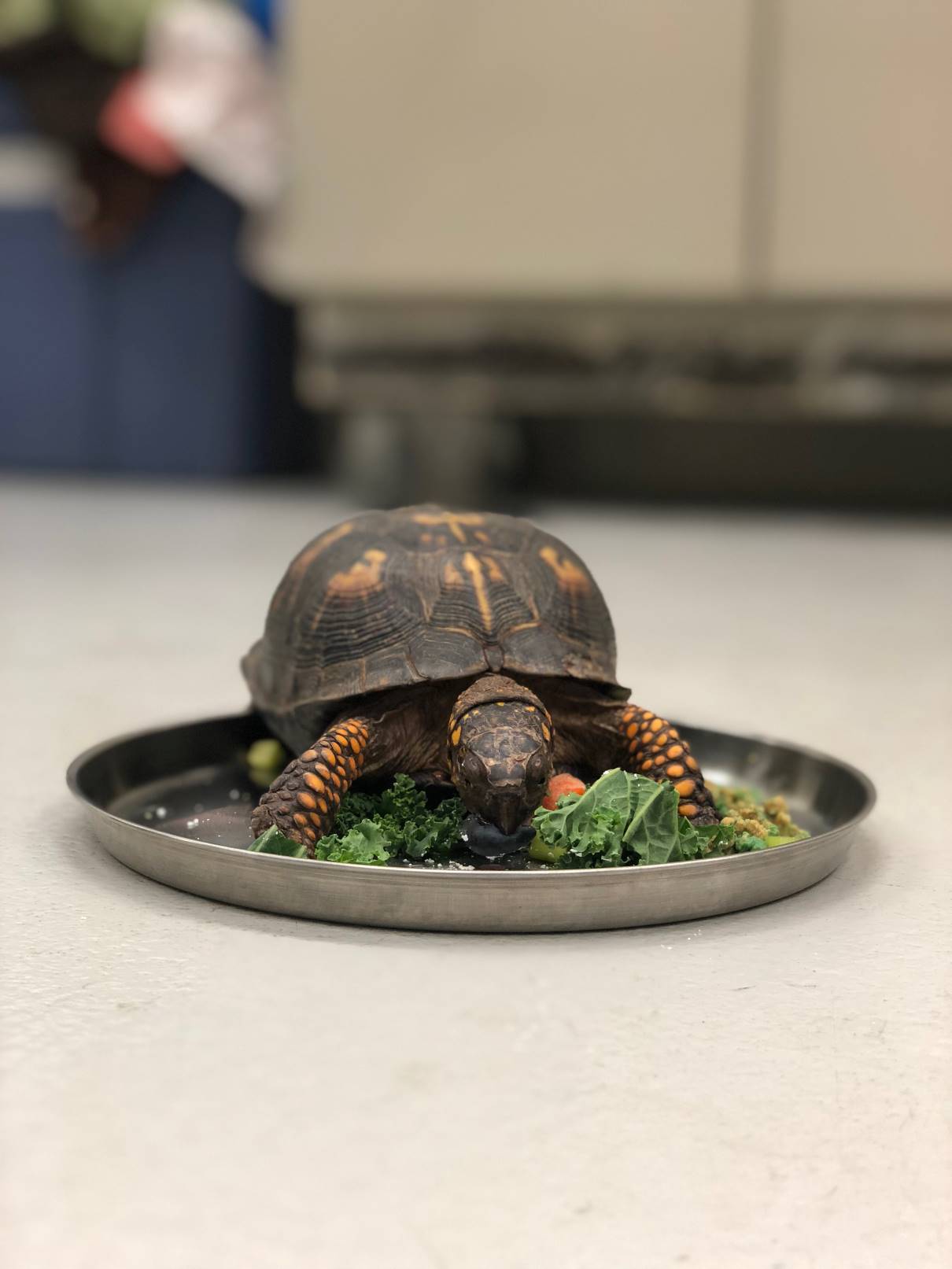BY: Kristen Braitkrus UNIVERSITY OF ILLINOIS COLLEGE OF VETERINARY MEDICINE
Who is this weirdo wearing a sheet, surgical mask, and gloves and what are they doing with that needle? Believe it or not, this is one of your friendly Wildlife Medical Clinic veterinary student volunteers! The patient this volunteer is treating is one that requires a very special dress code for a very special reason.
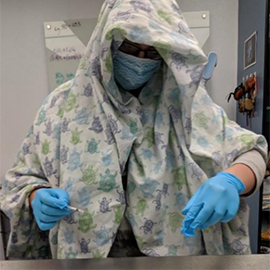
Springtime is an extremely busy time for the Wildlife Medical Clinic. Baby animals are brought in in droves to the Small Animal Clinic and veterinary student volunteers sign up for multiple shifts during the weekdays and weekends to keep these babies warm, clean and fed.
The WMC sees all kinds of orphaned babies – from fox kits to opossums. Normally, what
volunteers wear to treat the animals doesn’t matter at all, as long as they are wearing gloves to keep themselves and other orphans free from easily transmissible diseases and parasites.
In the case of this patient, what volunteers wear is incredibly important to its safety and well-being, as well as to its ability to thrive in the wild once released.
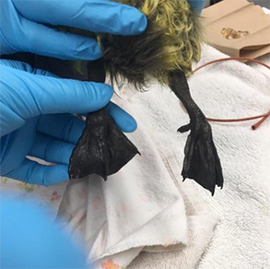
Recently, a Canada Goose gosling was brought in after it was found in a parking lot with other goslings and adult geese. The finders noticed that this gosling was sitting still in the parking lot and not following its flock around like a normal gosling. Upon physical exam, WMC volunteers found a superficial wound on the lateral (outside) aspect of the gosling’s foot that appeared to be infected and swollen. The foot itself was also incredibly swollen from the tarsal (ankle) joint down through digits two and three. The team suspected a fracture with how swollen the digits were, but they would need radiographs (X-rays) to make a solid diagnosis.
Team members briefly sedated the patient, cleaned and debrided the wound, applied topical antibiotic ointment, and wrapped the foot with a splint to keep the toes spread appropriately.
The gosling was also started on a course of pain medication, anti-inflammatory drugs and systemic antibiotics to prevent infection from spreading into the bone, blood, or other body
systems.
The team was quick to realize that this gosling was one of many species whose young are susceptible to something called “imprinting.” Imprinting, according to The Wildlife Center of Virginia, is, “… a form of learning in which an animal gains its sense of species identification.”
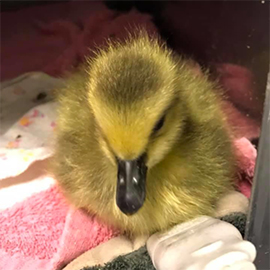
It is crucial when baby geese are born, to be exposed to their siblings and parents in order to “learn” that they are a goose; they do not immediately identify as such when they are born. This behavior helps the goslings learn important behaviors and vocalizations and helps them recognize members of their species which is important for mating as the gosling matures into an adult. The danger of working with this young gosling is that if the gosling begins to identify with humans and with the human shape, it will identify with humans for life rather than identifying with its own species. This bonds the animal to humans and makes it impossible to return it to the wild to live as an adult goose.
Even though this small creature is incredibly cute, the team had to do their best to be quiet and not to talk when handling the goose or when approaching the cage. The team members also wore “disguises” to hide their human shape to further help prevent imprinting. Mirrors and feather dusters were added to this patient’s enclosure to mimic the presence of other geese (extremely important for a social animal such as the Canada Goose). Though this type of patient can pose many kinds of challenges, the team committed to this gosling’s ongoing care and worked hard to prevent imprinting as well as to provide the best medical care possible to rehabilitate its injured foot.
Initial radiographs were difficult to interpret as the patient did not have fully formed joints yet (due to the young age) but a digit fracture was suspected. The team decided to splint the foot with a firm “bootie” crafted out of SAM splint, bandage tape, and vet wrap. The “bootie”
served a two-fold purpose: keeping the foot in a natural position and allowing the gosling to place weight on it and ambulate as well as providing a firm surface to stabilize
the potentially broken bones and allow them to set and heal.
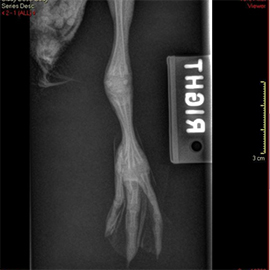
The team gave the gosling about a week wearing the splint and taking medications to help with pain and inflammation before taking follow-up radiographs. Once
the follow-up radiographs were taken, a distinct toe fracture was noticed, but it was already in the process of healing!
There were concerns that the gosling might lose range of motion in the injured foot, due to the fracture and the splinting, so since the fracture was healing and the patient was placing weight on the leg, the team elected to remove the splint and begin aggressive physical therapy.
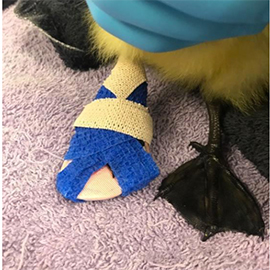
Physical therapy for a gosling includes ambulating normally without a splint
and plenty of swim time. This gosling got two sessions of swim time in warm water twice a day. The team also provided cold
laser therapy to the foot every day to decrease inflammation and promote healing. Thankfully, after just 1 more week of physical therapy, this gosling was walking and swimming perfectly normally.
As the gosling was still quite young, it needed a foster family. Canada Geese are extremely
accepting of unrelated goslings (and will immediately become protective of them) and we were lucky to find a family nearby with similar-sized goslings. Once released, this little patient
ran straight to its new family and never looked back!



